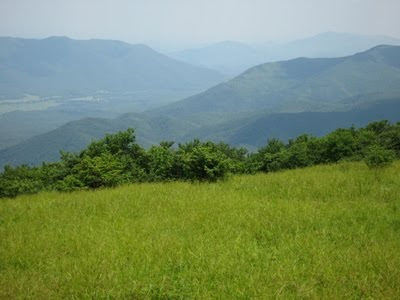Thanks to its topography, excellent trail system, and a favorable location of accommodations, hikers have the opportunity to experience an epic three-day loop in Glacier National Park that includes the absolute best scenery the park has to offer. And as a bonus, it doesn’t require lugging any backpacking equipment around, or camping under the stars. This “grand loop” starts from Logan Pass, visits Granite Park Chalet, drops down into the Many Glacier valley, climbs over Piegan Pass, and then heads back down to Siyeh Bend on the Going-to-the-Sun Road. Every step along this trek offers awe-inspiring beauty!
The best way to do this hike is to park your car at Rising Sun on the east side, or at Apgar on the west, and take the free shuttle up to Logan Pass. From there you’ll hike 7.6 miles along the
Highline Trail to the Granite Park Chalet. Due to its exceptionally beautiful views, the Highline Trail is likely the most popular backcountry trail in the park, and should be on the bucket list of any self-respecting hiker. With an elevation gain of only 975 feet, the hike to the chalet is also relatively easy.

If you feel this first leg of the loop is a little too easy, and you still have a little gas left in the tank, I highly recommend taking the 0.6-mile
Garden Wall Trail up to the top of the Continental Divide. From this perch, 900 feet above the Highline Trail, you’ll enjoy commanding views of Grinnell Glacier lying on the other side of the divide.
That night you’ll stay at the historic Granite Park Chalet. The Chalet has 12 guest rooms, each with 2 to 6 bunks. Although very basic, and virtually no amenities, it’s still much better than camping if you’re not a fan of sleeping in tents. Be forewarned though, you will need to make a reservation several months in advance.

The next day you’ll make the short climb over Swiftcurrent Pass before making the 2300-foot descent down to Many Glacier. From the top of the pass, down to the head of Bullhead Lake, the
Swiftcurrent Pass Trail drops nearly 2000 feet in just three miles. Once in the Swiftcurrent Valley the trail flattens out substantially. As you proceed down the valley you’ll pass Redrock Falls, Redrock Lake, Fishercap Lake, as well as several alpine meadows. In all, this leg of the trek covers 7.5 miles.
Before leaving Swiftcurrent Pass, however, you do have the option of visiting the Swiftcurrent Fire Lookout. The lookout is perched atop Swiftcurrent Mountain, which requires a climb of more than 900 feet in roughly 1.4 miles. As you might expect the panoramic views from this outpost are quite spectacular.
Once in Many Glacier you’ll have several options for overnight accommodations, including staying at the historic Many Glacier Hotel.

Your third day of hiking will be the longest and the toughest. Hikers will climb roughly 2700 feet as they make their way up to Piegan Pass, before dropping back down to Siyeh Bend on the Going-to-the-Sun Road. The climb out of the Many Glacier Valley is 8.4 miles by itself, and then from
Piegan Pass to Siyeh Bend is another 4.4 miles. Although Piegan Pass isn’t nearly as popular as the Highline Trail or Swiftcurrent Pass, it’s only because it’s overlooked by most people. If you still haven’t had enough of the mind-blowing scenery, I highly recommend taking the short and easy side trip out to
Preston Park, located roughly 2.4 miles from your end point. I would have to rank this as one of the beautiful alpine meadows I’ve ever seen.
Upon returning to the
Going-to-the-Sun Road simply take the shuttle to return back to your car.
The exceptionally beautiful views, the excellent opportunities for spotting wildlife, and the proliferation of wildflowers along most of the route, all combine to make this a hike you'll remember for the rest of your life.

The National Geographic
Trails Illustrated Map for Many Glacier includes the entire route described in this posting. The sectional maps
series for Glacier National Park have a scale of 1:50,000, and provide much greater detail such as backcountry campsites, footbridges, stream crossings, water and snow hazard locations, points-of-interest, as well as shuttle stops. All Trails Illustrated Maps are waterproof and tear-resistant.
Jeff
HikingintheSmokys.com
RockyMountainHikingTrails.com
HikinginGlacier.com
TetonHikingTrails.com
Ramble On: A History of Hiking
Exploring Glacier National Park
Exploring Grand Teton National Park























